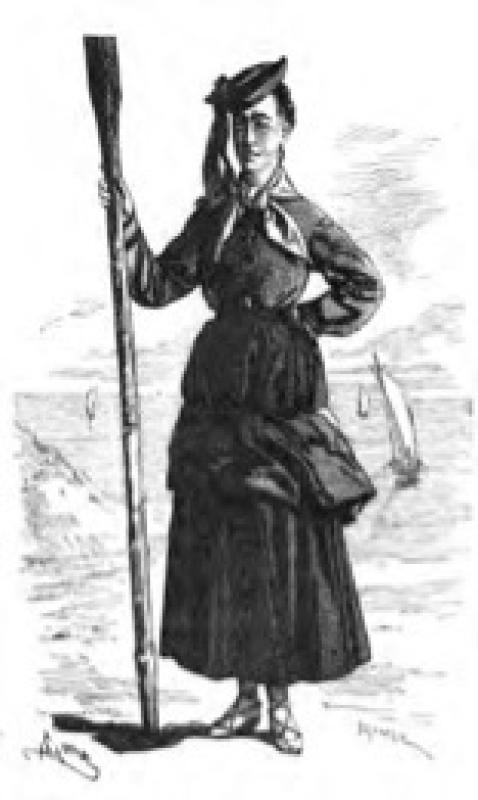Information on the objectives and activities of the TRAMA project
8. Women and the change for gender equality in Europe.
Women, work at sea and their forms of survival, but also the different forms of disapproval and rejection existing in a society such as the Basque one. Image of the cover of the research work. Pasages boatyard. Engraving by E. Gómez included in Juan Mañé y Flaquer’s book El Oasis, Viaje al País de los Fueros (1879).
Following the celebration of the International Day of Girls and Women in Science on 11 February, a group of archaeologists, historians and art historians have decided to launch an open and collaborative blog to host content about women scientists in these disciplines, artists and prominent women in history.Given the scarcity of female scientific references to inspire the women scientists of the future, this non-profit blog aims to be a way of disseminating knowledge about women who research in archaeology, history and art history, a way of making their work visible, as well as a place to share research on women throughout history.
It is a blog open to participation, so anyone can send their contribution on the proposed topics, so that all those women who also do science and made history have their space on the network.
From the permanent exhibition rooms, the curators will introduce us to the historical figures of some of the women represented in the Museum: Berenice II, María de Padilla and Isabel II.
Through this video, we will visit some of the rooms of the permanent exhibition and discover what it was like to be a woman at different times in the past.
The technical staff specialising in the different areas of the Museum will comment on some pieces related to the female sphere, thus building a general overview of the situation of women throughout different cultures and periods.
The Amazonian universe encompasses innumerable themes (gender, mythology, archaeology, social relations, the vision of the “Other”, war, autochthony, etc.). In short, an exclusively female society, or one where women control all areas, is considered a matriarchy (regardless of concepts such as matrilineality, matrilocality or both). It has filled pages, not only in antiquity, and has remained in the human mind for millennia. The emergence of matriarchal theories in the 19th century served to revive a dormant but never forgotten discussion of gender that greatly influenced early contemporary analyses of one of the best-known Greek myths. Many of the postulates that emerged then, such as matriarchy or the existence of a primordial Great Mother Goddess, now superseded, are still defended by various authors to support the supposed real existence of a society with these characteristics that deserve critical analysis.
The women belonging to the House of Austria played an important role in maintaining, strengthening and exalting the Habsburg family, becoming the pillars that contributed to sustaining and consolidating it as the hegemonic dynasty in 16th century Europe. They were powerful women who acted as true masters in the art of negotiation and political mediation, who knew how to move skilfully in the court environment and who used all the symbolic, propagandistic and religious elements to make the dynasty the main political reference of the time.
Throughout its history, the National Archaeological Museum has treasured Gothic funerary monuments of great artistic and documentary value of great artistic and documentary value that express, through their iconography, the values and beliefs of the late Middle Ages values and beliefs of the late medieval period. This study focuses on three of these monuments, belonging to to some highborn women who undertook great funerary projects to perpetuate their fame and that of their lineage fame and that of their lineage by displaying their power.
Presentation of the results of the research on a Lower Magdalenian burial site, which reveals data on the diet, mobility, lifestyles and genetic origin of a woman who was the object of a complex funerary ritual at this site.
Round table. Aware of the need to vindicate the role of women as active agents in history, the Feminist Research Institute of the UCM, in collaboration with the Department of Greek and Roman Antiquities, presents a Gender Itinerary on women in Ancient Greece, which deals with the construction of female identity, their spaces, gestures and tasks and the models of behaviour assigned to them. This reading is part of the project External link, opens in new windowItineraries for WomenExternal link, opens in new window External link promoted by the MECD and the Institute for Feminist Research to recover the memory of women in museums.





